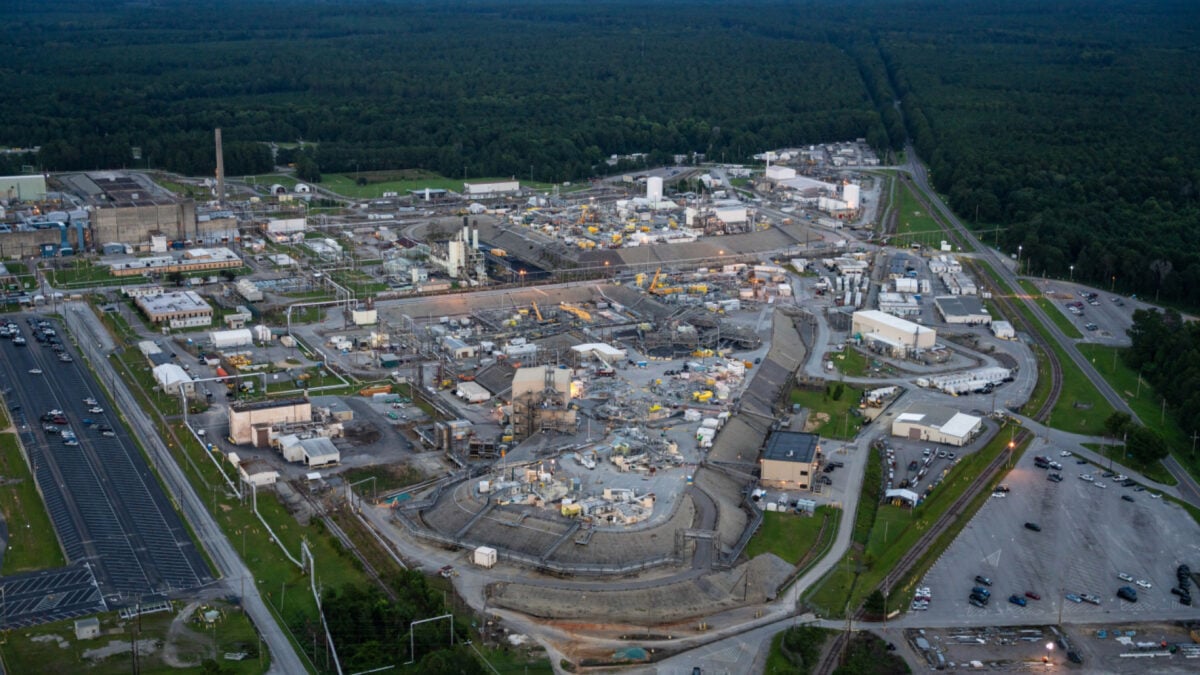Radioactive Wasp Nest Found in Decommissioned Nuclear Weapons Plant

As if wasps couldn’t get any scarier, a chilling discovery near Aiken, South Carolina, suggests they’re comfortable making their nest in a former nuclear bomb facility.
On July 3, employees conducting a regular checkup of radiation levels at the Savannah River Site (SRS)—a former nuclear weapons production facility dating back to the 1950s—found themselves staring down at something that probably should not have been there. That something was a wasp nest measuring more than 10 times the federally permitted radiation limit.
Nearly three weeks after this bizarre discovery, Department of Energy (DOE) officials published a report on the incident, in which they assured local residents that no new leaks had been found in the waste tanks. Rather, the nest likely became radioactive from leftover contamination dating back to when the site was fully operational. As per procedure, the workers sprayed the nest with insecticide and bagged it—along with the dead bees—as radioactive waste, according to the report.
“The delay in reporting was to allow time for reviewing previous wildlife contamination for consistency in reporting criteria,” officials said. “No further action was required in the field. There is no impact from [the] event on other activities and operations.”
The SRS was built in the early 1950s to produce tritium and plutonium-239 for the manufacture of nuclear weapons. Close to the turn of the century, the U.S. government transitioned the plant from a weapons manufacturer to a producer of fuel for nuclear plants, in addition to cleaning up decommissioned structures.
Overall, DOE and its contractor Savannah River Mission Completion (SRMC), which manages the site, concluded that the incident, while understandably unsettling, shouldn’t be of significant concern to the public
“Upon discovery of the contaminated nest, the immediate area was secured and surveyed; no contamination was found in the area,” SRMC told the Aiken Standard. “There were no impacts to workers, the environment, or the public.”
The company also said that further surveys of the nest revealed there weren’t any wasps left on the nest, adding that even if there were, the individual insects “would have significantly lower levels of contamination.”
Watchdogs of the site aren’t so impressed by the official explanations. Savannah River Site Watch criticized the report for being incomplete, failing to address where the contamination came from, how the wasps encountered the radiation, and, most importantly, whether a yet-uncovered leak could have left another radioactive wasp nest in the vicinity.
“I’m as mad as a hornet that SRS didn’t explain where the radioactive waste came from or if there is some kind of leak from the waste tanks that the public should be aware of,” Tom Clements, executive director of Savannah River Watch, told CBS News.
Identifying the type of wasp nest could have revealed the source of the contamination, Clements said, since some wasps build nests from dirt while others use materials that can point to specific locations. It’s unclear, however, whether this apparent lack of effort reflects ignorance or negligence on the part of the officials.









